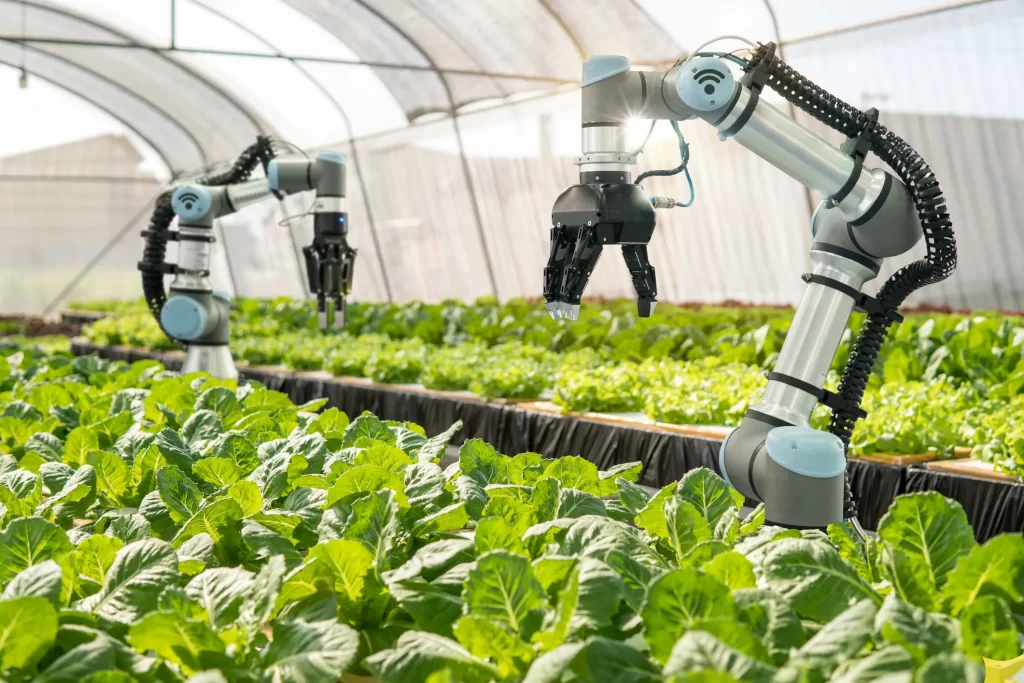The Future of Food: Investment Opportunities in AgTech & FoodTech

What if the future of food, including sustainable eating and innovative technologies, could be shaped by nutrition, human foods, and gen foods? The landscape of agtech and foodtech is rapidly evolving, presenting exciting investment opportunities in nutrition, with bank-like ease and convenience. From sustainable farming practices to advanced food production methods and tech, these sectors are set to transform how we grow and consume food. Investors have a chance to tap into groundbreaking solutions that address global challenges like hunger and climate change, as food innovators converge on new food tech frontiers through innovative food future and food technology investment. This post explores key trends, potential returns, and why now is the time to dive into the world of agtech and foodtech investments.
Key Takeaways
- The agtech and foodtech sectors are rapidly evolving, presenting numerous investment opportunities for those looking to enter the market.
- Stay informed about emerging trends, such as plant-based foods, tech, and sustainable farming practices, as these areas are gaining traction and attracting investor interest.
- Key drivers of investment include consumer demand for healthier options and advancements in technology that enhance food production efficiency.
- Be aware of challenges like regulatory hurdles and market competition, as well as future food concerns and global food waste, that may impact your investment decisions in agtech.
- For investors and startups, developing strong partnerships and focusing on innovation can lead to successful outcomes in the competitive food tech landscape.
- Consider diversifying your investments across various segments of agtech and foodtech to mitigate risks and capitalize on different growth areas.
Current Landscape of AgTech and FoodTech
Industry Significance
The global food industry, along with tech, plays a crucial role in the economy. It contributes about 10% to the global GDP. This sector includes various areas, from agriculture to tech food production. The agrifood industry is vital for human survival, economic stability, and tech advancements.
Spending Trends
In 2018, consumers in the United States spent a record $1.71 trillion on food and beverages. This figure highlights the importance of food producers, tech, and their impact on the economy. Increased spending reflects growing demand for diverse food options.
Challenges Ahead
The food supply chain faces significant challenges today. Changing consumer trends demand more sustainable practices. People are increasingly focused on health and freshness. These shifts require innovation within the agtech and foodtech sectors.

Food producers must adapt to these realities. They need to implement new technologies for future food to meet consumer expectations. Sustainability is no longer optional; tech is essential for future growth.
Investments in agtech can help address these issues. Technologies that improve efficiency and reduce waste for future food will be critical. Solutions that enhance food quality will also attract attention.
Emerging Trends in Food Technology
Innovations in AgTech
Food tech innovations are transforming agriculture. New technologies focus on protecting crops while promoting sustainability. These innovations aim to reduce greenhouse gas emissions and minimize water usage for future food tech. For instance, precision farming tech uses data analytics to optimize resource use for future food. Drones and sensors monitor crop health with tech, leading to better yields for future food with less input.
Funding Growth
The rise in funding for food tech is notable. In 2008, investments totaled around $60 million. By 2015, this number skyrocketed to over $1 billion. This surge illustrates growing confidence in the food industry. Investors recognize the potential of innovative food solutions. They support tech startups developing novel food products and sustainable practices.
Investment Comparisons
Total investments in food tech have surpassed those in agtech. Funding and exit activity show a clear trend favoring food tech. Investors are drawn to the rapid growth and profitability potential within this future food category. As a result, many food innovators converge on this space, creating exciting opportunities for future advancements.
Key Drivers of Food Tech Investments
Consumer Demand
Increasing consumer demand shapes the food tech sector. People want convenience, quality, and transparency in their food choices. They seek future food products that are easy to prepare and consume. Quality matters too; consumers prefer fresh, nutritious options. Transparency in sourcing builds trust. Brands that communicate their supply chain effectively attract more customers.
CPG Incumbents’ Shift
Consumer packaged goods (CPG) companies are changing focus. They recognize the need for innovation in the food industry. This shift opens doors for startups and new innovators. Established players now invest in food technology to stay competitive. They look for partners who can provide cutting-edge solutions. This collaboration fuels growth in the food tech sector.
Premium Pricing
Consumers show a willingness to pay more for food tech innovations. Many prioritize health and sustainability over cost. They value products that meet their needs while having a low environmental impact. Brand food companies that align with these values tap into this trend effectively. Investing in sustainable practices becomes essential for attracting today’s consumers.
Challenges in AgTech Capital
High Costs
AgTech innovations often require high initial costs. Developing new technologies can take significant financial resources. Startups frequently struggle to cover expenses for research, development, and testing. Long timelines for product development add to these costs. Investors may hesitate to commit funds when returns are uncertain.
Regulatory Hurdles
Regulatory hurdles pose another challenge. Compliance with safety and health regulations can slow progress. Each country has different rules governing agricultural technology. Navigating these regulations takes time and money. Delays in approval can stall promising projects. This uncertainty makes it tough for companies to plan their growth strategies.
Competition for Funding
AgTech startups face stiff competition for funding. Many investors prefer sectors like software or renewable energy. These areas often promise quicker returns on investment. Consequently, agtech companies struggle to secure the capital they need. They must work harder to demonstrate their potential for success.
Investors should be aware of these challenges. Understanding the landscape helps them make informed decisions about where to invest. Despite the obstacles, opportunities exist in agtech for those willing to navigate these complexities.
Strategies for Investors and Startups
Scalable Solutions
Investors should focus on scalable solutions that tackle major industry challenges. Sustainability and efficiency are critical pain points in food production. Startups that develop technologies to reduce waste or optimize resources will attract attention. Solutions like vertical farming and precision agriculture can significantly impact the market.
Strong Partnerships
Building strong partnerships with established companies is essential. Collaborating with experienced players in the food and agriculture sectors provides access to valuable expertise. It also opens doors to additional funding opportunities. Joint ventures can enhance the credibility of startups, making them more appealing to investors.
Staying Informed
Staying informed about regulatory changes is crucial for both investors and startups. The food industry faces evolving regulations that can affect operations. Understanding these changes helps companies adapt their strategies effectively. Monitoring consumer trends also plays a vital role in shaping business decisions. Consumers increasingly demand transparency and sustainability in their food choices.
Funding Opportunities
Venture capitalists are looking for innovative companies in agtech and foodtech. They seek businesses that show potential for growth and positive impact. Engaging with investors who specialize in these areas can lead to fruitful collaborations.
Final Remarks
The future of food is bright, with agtech and foodtech leading the charge. You’ve seen how current trends and key drivers shape investment opportunities. Challenges exist, but they are not insurmountable. With the right strategies, you can navigate this evolving landscape effectively.
Investing in these sectors means being part of a transformative journey. It’s about sustainability, innovation, and meeting the demands of a growing population. Don’t miss out on these opportunities. Dive in, explore partnerships, and stay ahead of the curve. Your next big investment could be just around the corner.
Frequently Asked Questions
What is AgTech?
AgTech, or agricultural technology, refers to innovations that enhance farming efficiency, productivity, and sustainability. This includes tools and solutions like precision farming, biotechnology, and data analytics.
What is FoodTech?
FoodTech encompasses technology-driven solutions in the food industry. It includes advancements in food production, processing, distribution, and consumption aimed at improving quality and sustainability.
Why invest in AgTech and FoodTech?
Investing in AgTech and FoodTech presents opportunities for growth as global food demand rises. These sectors offer innovative solutions to critical challenges like food security and environmental impact.
What are the emerging trends in Food Technology?
Emerging trends include plant-based alternatives, lab-grown meat, sustainable packaging, and digital platforms for food distribution. These innovations aim to meet consumer demands for healthier, eco-friendly options.
What challenges do investors face in AgTech?
Investors may encounter regulatory hurdles, high capital requirements, and market volatility. Understanding these challenges is crucial for making informed investment decisions.
How can startups succeed in the AgTech sector?
Startups can succeed by focusing on innovation, understanding market needs, building strategic partnerships, and securing funding. A clear value proposition is essential for attracting investors.
What strategies should investors consider?
Investors should diversify their portfolios, stay updated on industry trends, and collaborate with experts. Engaging with startups early can provide unique insights and growth potential.
 Send Buck a voice message!
Send Buck a voice message!



